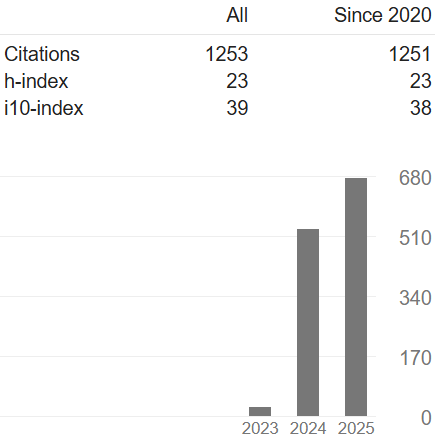UNMASKING FRAUDSTERS: Ensemble Features Selection to Enhance Random Forest Fraud Detection
DOI:
https://doi.org/10.33633/jcta.v1i2.9462Keywords:
Ensemble Feature, Fraud detection, Fraudulent Transaction, Machine Learning, Random Forest AlgorithmAbstract
Fraud detection is used in various industries, including banking institutes, finance, insurance, government agencies, etc. Recent increases in the number of fraud attempts make fraud detection crucial for safeguarding financial information that is confidential or personal. Many types of fraud problems exist, including card-not-present fraud, fake Marchant, counterfeit checks, stolen credit cards, and others. An ensemble feature selection technique based on Recursive feature elimination (RFE), Information gain (IG), and Chi-Squared (X2) in concurrence with the Random Forest algorithm, was proposed to give research findings and results on fraud detection and prevention. The objective was to choose the essential features for training the model. The Receiver Operating Characteristic (ROC) Score, Accuracy, F1 Score, and Precision are used to evaluate the model's performance. The findings show that the model can differentiate between fraudulent transactions and those that are not, with an ROC Score of 95.83% and an Accuracy of 99.6%. The F1 Score of 99.6%% and precision of 100% further sustain the model's ability to detect fraudulent transactions with the least false positives correctly. The ensemble feature selection technique reduced training time and did not compromise the model's performance, making it a valuable tool for businesses in preventing fraudulent transactions.References
G. Potamitis, “Design and Implementation of a Fraud Detection Expert System using Ontology- Based Techniques,” University of Manchester, 2013. [Online]. Available: https://studentnet.cs.manchester.ac.uk/resources/library/thesis_abstracts/MSc13/FullText/Potamitis-Giannis-fulltext.pdf
P. Alexopoulos, K. Kafentzis, X. Benetou, T. Tagaris, and P. Georgolios, “Towards a Generic Fraud Ontology in E-Government,” in Proceedings of the Second International Conference on e-Business, 2007, pp. 269–276. doi: 10.5220/0002112602690276.
A. A. Ojugo, M. I. Akazue, P. O. Ejeh, C. C. Odiakaose, and F. U. Emordi, “DeGATraMoNN: Deep Learning Memetic Ensemble to Detect Spam Threats via a Content-Based Processing,” Kongzhi yu Juece/Control Decis., vol. 38, no. 1, pp. 667–678, 2023.
A. Ali et al., “Financial Fraud Detection Based on Machine Learning: A Systematic Literature Review,” Appl. Sci., vol. 12, no. 19, p. 9637, Sep. 2022, doi: 10.3390/app12199637.
M. I. Akazue, “A Survey of E-commerce Transaction Fraud Prevention Models,” in The Proceedings of the International Conference on Digital Information Processing, Data Mining, and Wireless Communications, 2015. [Online]. Available: https://api.semanticscholar.org/CorpusID:16302504
K. G. Al-Hashedi and P. Magalingam, “Financial fraud detection applying data mining techniques: A comprehensive review from 2009 to 2019,” Comput. Sci. Rev., vol. 40, p. 100402, May 2021, doi: 10.1016/j.cosrev.2021.100402.
P. Singh and M. Singh, “Fraud Detection by Monitoring Customer Behavior and Activities,” Int. J. Comput. Appl., vol. 111, no. 11, pp. 23–32, Feb. 2015, doi: 10.5120/19584-1340.
A. A. Ojugo et al., “Forging a User-Trust Memetic Modular Neural Network Card Fraud Detection Ensemble: A Pilot Study,” J. Comput. Theor. Appl., vol. 1, no. 2, pp. 50–60, Oct. 2023, doi: 10.33633/jcta.v1i2.9259.
A. O. Adewumi and A. A. Akinyelu, “A survey of machine-learning and nature-inspired based credit card fraud detection techniques,” Int. J. Syst. Assur. Eng. Manag., vol. 8, no. S2, pp. 937–953, Nov. 2017, doi: 10.1007/s13198-016-0551-y.
M. I. Akazue and A. Augusta, “Identification of Cloned Payment Page in E-commerce Transaction,” Int. Manag. Rev., vol. 11, no. 2, pp. 70–76, 2015, [Online]. Available: https://api.semanticscholar.org/CorpusID:59034009
M. I. Alowais and L.-K. Soon, “Credit Card Fraud Detection: Personalized or Aggregated Model,” in 2012 Third FTRA International Conference on Mobile, Ubiquitous, and Intelligent Computing, Jun. 2012, pp. 114–119. doi: 10.1109/MUSIC.2012.27.
A. Thakur, B. Shaikh, V. Jain, and A.M.Magar, “Credit Card Fraud Detection Using Hidden Markov Mode and Enhanced Security Features,” Int. J. Eng. Schemes Res. Technol., vol. 4, no. 4, pp. 72–77, 2015.
M. I. Akazue, G. A. Nwokolo, O. A. Ejaita, C. O. Ogeh, and E. Ufiofio, “Machine Learning Survival Analysis Model for Diabetes Mellitus,” Int. J. Innov. Sci. Res. Technol., vol. 8, no. 4, pp. 754–760, 2023.
R. R. Popat and J. Chaudhary, “A Survey on Credit Card Fraud Detection Using Machine Learning,” in 2018 2nd International Conference on Trends in Electronics and Informatics (ICOEI), May 2018, pp. 1120–1125. doi: 10.1109/ICOEI.2018.8553963.
P. Boulieris, J. Pavlopoulos, A. Xenos, and V. Vassalos, “Fraud detection with natural language processing,” Mach. Learn., Jul. 2023, doi: 10.1007/s10994-023-06354-5.
S. K. Hashemi, S. L. Mirtaheri, and S. Greco, “Fraud Detection in Banking Data by Machine Learning Techniques,” IEEE Access, vol. 11, pp. 3034–3043, 2023, doi: 10.1109/ACCESS.2022.3232287.
M. G. Kibria and M. Sevkli, “Application of Deep Learning for Credit Card Approval: A Comparison with Two Machine Learning Techniques,” Int. J. Mach. Learn. Comput., vol. 11, no. 4, pp. 286–290, Aug. 2021, doi: 10.18178/ijmlc.2021.11.4.1049.
D. Varmedja, M. Karanovic, S. Sladojevic, M. Arsenovic, and A. Anderla, “Credit Card Fraud Detection - Machine Learning methods,” in 2019 18th International Symposium INFOTEH-JAHORINA (INFOTEH), Mar. 2019, pp. 1–5. doi: 10.1109/INFOTEH.2019.8717766.
V. Shah, P. Shah, H. Shetty, and K. Mistry, “Review of Credit Card Fraud Detection Techniques,” in 2019 IEEE International Conference on System, Computation, Automation and Networking (ICSCAN), Mar. 2019, pp. 1–7. doi: 10.1109/ICSCAN.2019.8878853.
A. Maureen, O. Anthonia, E. Omede, and J. P. A. . Hampo, “Use of Adaptive Boosting Algorithm to Estimate User ’ s Trust in the Utilization of Virtual Assistant Systems,” Int. J. Innov. Sci. Res. Technol., vol. 8, no. 1, pp. 502–507, 2023.
B. M. P. Waseso and N. A. Setiyanto, “Web Phishing Classification using Combined Machine Learning Methods,” J. Comput. Theor. Appl., vol. 1, no. 1, pp. 11–18, Aug. 2023, doi: 10.33633/jcta.v1i1.8898.
F. Mustofa, A. N. Safriandono, and A. R. Muslikh, “Dataset and Feature Analysis for Diabetes Mellitus Classification using Random Forest,” J. Comput. Theor. Appl., vol. 1, no. 1, pp. 41–48, Sep. 2023, doi: 10.33633/jcta.v1i1.9190.
X. Zhang, Y. Han, W. Xu, and Q. Wang, “HOBA: A novel feature engineering methodology for credit card fraud detection with a deep learning architecture,” Inf. Sci. (Ny)., vol. 557, pp. 302–316, May 2021, doi: 10.1016/j.ins.2019.05.023.
A. Razaque et al., “Credit Card-Not-Present Fraud Detection and Prevention Using Big Data Analytics Algorithms,” Appl. Sci., vol. 13, no. 1, p. 57, Dec. 2022, doi: 10.3390/app13010057.
K. A. K. Saputra, Mu’ah, Jurana, C. W. M. Korompis, and D. T. H. Manurung, “Fraud Prevention Determinants: A Balinese Cultural Overview,” Australas. Accounting, Bus. Financ. J., vol. 16, no. 3, pp. 167–181, 2022, doi: 10.14453/aabfj.v16i3.11.
A. Shaji, S. Binu, A. M. Nair, and J. George, “Fraud Detection in Credit Card Transaction Using ANN and SVM,” 2021, pp. 187–197. doi: 10.1007/978-3-030-79276-3_14.
J. Femila Roseline, G. Naidu, V. Samuthira Pandi, S. Alamelu alias Rajasree, and D. N. Mageswari, “Autonomous credit card fraud detection using machine learning approach?,” Comput. Electr. Eng., vol. 102, p. 108132, Sep. 2022, doi: 10.1016/j.compeleceng.2022.108132.
K. Deepika, M. P. S. Nagenddra, M. V. Ganesh, and N. Naresh, “Implementation of Credit Card Fraud Detection Using Random Forest Algorithm,” Int. J. Res. Appl. Sci. Eng. Technol., vol. 10, no. 3, pp. 797–804, Mar. 2022, doi: 10.22214/ijraset.2022.40702.
L. Flores, R. M. Hernandez, L. C. Tolentino, C. A. Mendez, and M. G. Z. Fernando, “A Classification Approach in the Probability of Credit Card Approval using Relief-Based Feature Selection,” in 2022 2nd Asian Conference on Innovation in Technology (ASIANCON), Aug. 2022, pp. 1–7. doi: 10.1109/ASIANCON55314.2022.9908827.
P. Naveen and B. Diwan, “Relative Analysis of ML Algorithm QDA, LR and SVM for Credit Card Fraud Detection Dataset,” in 2020 Fourth International Conference on I-SMAC (IoT in Social, Mobile, Analytics and Cloud) (I-SMAC), Oct. 2020, pp. 976–981. doi: 10.1109/I-SMAC49090.2020.9243602.
O. Sinayobye, R. Musabe, A. Uwitonze, and A. Ngenzi, “A Credit Card Fraud Detection Model Using Machine Learning Methods with a Hybrid of Undersampling and Oversampling for Handling Imbalanced Datasets for High Scores,” 2023, pp. 142–155. doi: 10.1007/978-3-031-34222-6_12.
E. A. L. Marazqah Btoush, X. Zhou, R. Gururajan, K. C. Chan, R. Genrich, and P. Sankaran, “A systematic review of literature on credit card cyber fraud detection using machine and deep learning,” PeerJ Comput. Sci., vol. 9, p. e1278, Apr. 2023, doi: 10.7717/peerj-cs.1278.
A. A. Taha and S. J. Malebary, “An Intelligent Approach to Credit Card Fraud Detection Using an Optimized Light Gradient Boosting Machine,” IEEE Access, vol. 8, pp. 25579–25587, 2020, doi: 10.1109/ACCESS.2020.2971354.
N. Uchhana, R. Ranjan, S. Sharma, D. Agrawal, and A. Punde, “Literature Review of Different Machine Learning Algorithms for Credit Card Fraud Detection,” Int. J. Innov. Technol. Explor. Eng., vol. 10, no. 6, pp. 101–108, Apr. 2021, doi: 10.35940/ijitee.C8400.0410621.
C. Jiang, J. Song, G. Liu, L. Zheng, and W. Luan, “Credit Card Fraud Detection: A Novel Approach Using Aggregation Strategy and Feedback Mechanism,” IEEE Internet Things J., vol. 5, no. 5, pp. 3637–3647, Oct. 2018, doi: 10.1109/JIOT.2018.2816007.
W.-H. Chang and J.-S. Chang, “An effective early fraud detection method for online auctions,” Electron. Commer. Res. Appl., vol. 11, no. 4, pp. 346–360, Jul. 2012, doi: 10.1016/j.elerap.2012.02.005.
R. E. Yoro, F. ObukohwoAghware, M. I. Akazue, A. E. Ibor, and A. A. Ojugo, “Evidence of personality traits on phishing attack menace among selected university undergraduates in Nigeria,” Int. J. Electr. Comput. Eng., vol. 13, no. 2, p. 1943, Apr. 2023, doi: 10.11591/ijece.v13i2.pp1943-1953.
T. Dissanayake, Y. Rajapaksha, R. Ragel, and I. Nawinne, “An Ensemble Learning Approach for Electrocardiogram Sensor-Based Human Emotion Recognition,” Sensors, vol. 19, no. 20, p. 4495, Oct. 2019, doi: 10.3390/s19204495.
M. I. Akazue, A. Clive, E. Abel, O. Edith, and E. Ufiofio, “Cybershield: Harnessing Ensemble Feature Selection Technique for Robust Distributed Denial of Service Attacks Detection,” Kongzhi yu Juece/Control Decis., vol. 38, no. 3, 2023.
O. Deborah, A. Maureen, and I. Anthony, “A Framework for Feature Selection using Data Value Metric and Genetic Algorithm,” Int. J. Comput. Appl., vol. 184, no. 43, pp. 14–21, Jan. 2023, doi: 10.5120/ijca2023922533.
K. S., S. J., J. K., A. T., and R. R., “Ensemble feature selection using q-rung orthopair hesitant fuzzy multi-criteria decision making extended to VIKOR,” J. Exp. Theor. Artif. Intell., pp. 1–35, Mar. 2023, doi: 10.1080/0952813X.2023.2183273.
A. A. Ojugo and A. O. Eboka, “Comparative Evaluation for High Intelligent Performance Adaptive Model for Spam Phishing Detection,” Digit. Technol. Vol. 3, 2018, Pages 9-15, vol. 3, no. 1, pp. 9–15, Nov. 2018, doi: 10.12691/DT-3-1-2.
O. D. Voke, D. A. M, D. O. E. U, D. O. E.O, and P. I. A, “Survival Prediction of Cervical Cancer Patients using Genetic Algorithm-Based Data Value Metric and Recurrent Neural Network,” Int. J. Soft Comput. Eng., vol. 13, no. 2, pp. 29–41, May 2023, doi: 10.35940/ijsce.B3608.0513223.
A. A. Ojugo and E. Ekurume, “Deep Learning Network Anomaly-Based Intrusion Detection Ensemble For Predictive Intelligence To Curb Malicious Connections: An Empirical Evidence,” Int. J. Adv. Trends Comput. Sci. Eng., vol. 10, no. 3, pp. 2090–2102, Jun. 2021, doi: 10.30534/ijatcse/2021/851032021.
M. Ifeanyi Akazue, R. Elizabeth Yoro, B. Ogheneovo Malasowe, O. Nwankwo, and A. Arnold Ojugo, “Improved services traceability and management of a food value chain using block-chain network: a case of Nigeria,” Indones. J. Electr. Eng. Comput. Sci., vol. 29, no. 3, p. 1623, Mar. 2023, doi: 10.11591/ijeecs.v29.i3.pp1623-1633.
A. A. Ojugo and D. O. Otakore, “Intelligent cluster connectionist recommender system using implicit graph friendship algorithm for social networks,” IAES Int. J. Artif. Intell., vol. 9, no. 3, p. 497, Sep. 2020, doi: 10.11591/ijai.v9.i3.pp497-506.
S. Okofu, E. K. Anazia, M. Akazue, C. Ogeh, and I. B. Ajenaghughrure, “The Interplay Between Trust In Human-Like Technologies And Integral Emotions: Google Assistant,” Kongzhi yu Juece/Control Decis., vol. 1, 38AD.
T. Xiong, S. Wang, A. Mayers, and E. Monga, “Personal bankruptcy prediction by mining credit card data,” Expert Syst. Appl., vol. 40, no. 2, pp. 665–676, Feb. 2013, doi: 10.1016/j.eswa.2012.07.072.
Downloads
Published
How to Cite
Issue
Section
License
Copyright (c) 2023 Irene Alamarefa Debekeme

This work is licensed under a Creative Commons Attribution 4.0 International License.















